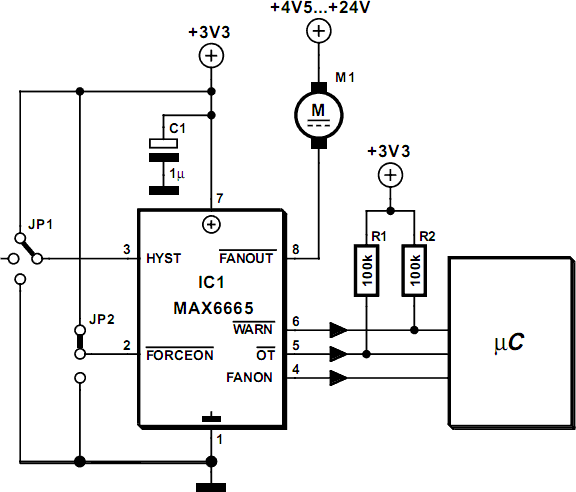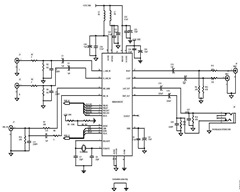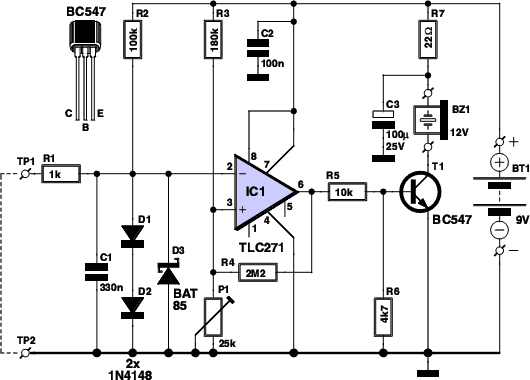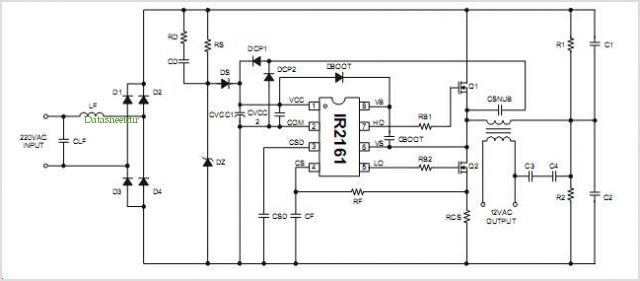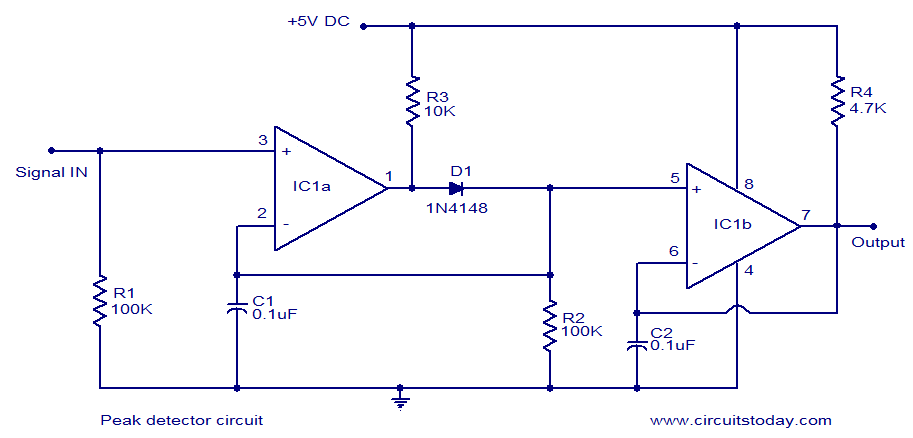
Unusual Components and Applications
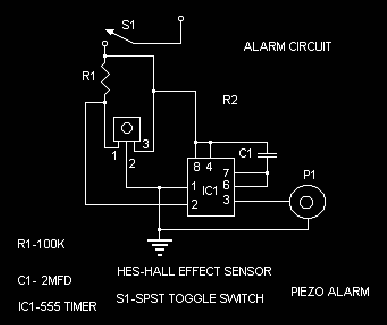
A common NPN transistor can be configured as a negistor by reversing its connections. The emitter connects to the power source via a resistor, while the collector connects to ground. In this configuration, the transistor demonstrates a phenomenon known as negative resistance, or avalanching. A capacitor is placed across the transistor, charging until the reverse breakdown voltage is reached. At this point, the collector-emitter resistance drops below zero, allowing the capacitor to discharge through the transistor. After discharging, the transistor reverts to its resistive state, and the capacitor begins to charge again. Although not all transistors will function in this mode, many can, including those that may test defective. The circuit exhibits remarkable stability and produces a linear ramp wave, which can directly drive a speaker or connect to an amplifier stage for use as a function generator. Its wide range and stability make it suitable for music synthesizers. The components in the circuit serve as a starting point, as different transistors may require varying component values for optimal performance, thus experimentation is encouraged. A regulated power source of at least 15 volts is recommended. The avalanche mode can also be employed to generate white noise. The illustration depicts transistor Q1 connected differently than in the oscillator configuration. Instead of using the emitter lead, the base is utilized, resulting in a cascade of random frequencies due to the absence of frequency-selecting components. Transistor Q2 amplifies the signal using resistor R2 as a current limiter, while resistors R3 and capacitor C1 enhance response and increase overall gain. Potentiometer R1 allows customization of the drive current to achieve optimal results from a specific transistor, and it should be adjusted for maximum volume. White noise encompasses all frequencies at equal levels, serving purposes in electronic music production and audio testing. Another interesting solid-state device is the unijunction transistor. Unlike conventional bipolar and FET transistors that utilize a base or gate lead to control resistance between the other two leads, unijunction transistors operate differently. They pass the input signal directly to ground, making them suitable only as wave shape generators. They produce a negative pulse at base 1 and a reverse exponential ramp at the emitter. In the unijunction circuit, capacitor C1 charges through resistor R1, and when a trigger voltage of approximately 1.3 volts is reached, the capacitor discharges through base 2. Simultaneously, capacitor C2 charges through resistor R2 and discharges alongside capacitor C1, generating a negative pulse. The schematic symbol for a unijunction transistor resembles that of an FET, except for the input lead, which points downward to indicate the capacitor's discharge to ground function. Since the unijunction transistor is not a linear device, an FET amplifier stage is necessary to produce a linear ramp. Due to the complex harmonic content of a linear ramp, it is more suitable for synthesizer tones or test tones. In situations where a specific resistor value is unavailable, a trimmer potentiometer can be employed; however, tuning the exact value may be challenging, and vibrations could alter the setting.
The negistor circuit described utilizes the unique properties of NPN transistors to achieve negative resistance, which is crucial for generating oscillations and waveforms. The configuration facilitates rapid charging and discharging of capacitors, resulting in a continuous cycle of waveform generation. This behavior is particularly advantageous in applications such as signal modulation, tone generation, and sound synthesis. The stability of the circuit allows it to be integrated into various electronic music instruments, providing a versatile platform for sound design.
The use of unijunction transistors introduces additional functionality, particularly in generating waveforms that require precise timing and pulse characteristics. The ability of the unijunction transistor to produce negative pulses and exponential ramps makes it an essential component in timing circuits and pulse-width modulation applications. The interaction between the resistors and capacitors in the circuit determines the frequency and shape of the output waveform, allowing for tailored sound synthesis.
In summary, the described circuits, utilizing both NPN transistors in negistor configurations and unijunction transistors, offer a wealth of possibilities for audio applications and electronic experimentation. The emphasis on component experimentation highlights the importance of understanding individual transistor characteristics, as variations in these components can significantly impact circuit performance.A common NPN transistor can be turned into a negistor by wiring it in reverse. The emitter is connected to the power source through a resistor and the collector is connected to ground. When wired this way the transistor exhibits a phenomenon known as negative resistance, also known as avalanching.
In the diagram we see a capacitor across the transistor charges until the reverse breakdown voltage is reached. At this point the collector to emitter resistance actually reaches a resistance of less than zero and then the capacitor is discharged through transistor. Once the capacitor is discharged the transistor returns to its resistive state and the capacitor starts to charge again.
Not all transistors will operate in this mode, however, a surprisingly large number do. Even transistors that test bad may operate as negisters. Amazingly, the circuit is extremely stable and produces a linear ramp wave. It can feed a speaker directly or, an amplifier stage can be added to use the oscillator as a function generator. Its wide range and stability make it suitable for use in music synthesizers. The components used in the circuit are just a starting point, for different transistors will react differently and you may have needs that require other component values so experiment.
It is advisable to use a regulated power source of at least15 volt. The avalanche mode can also be useful in the production of white noise. The illustration shows a transistor Q1 connected differently than the oscillator. Instead of the emitter lead, the base of the transistor is used and since there are no frequency-selecting components, a cascade of random frequencies is generated. Transistor Q2 amplifies the signal using resistor R2 as a current limiter, while R3 and capacitor C1 smooth response and increase the overall gain.
Potentiometer R1 will customize the drive current to obtain the best results from a particular transistor. It should be adjusted to get the maximum volume. White noise is all frequencies at the same level and it is used in electronic music production as well as a tone source for audio testing.
One of the most unusual solid state devices is the unijunction transistor. Conventional bipolar and FET transistors use a base or gate lead to control the resistance between the 2 remaining leads. Unijunction transistors do not operate like other transistors. Unlike other transistors, The unijunction transistor actually passes the input signal through to ground.
This makes it suitable only as a wave shape generator. It produces a negative pulse at base 1 and a reverse exponential ramp at the emitter. In the unijunction circuit capacitor C1 charges through resistor R1. When a trigger voltage is reached (approximately 1. 3 volts), the capacitor is discharged through base 2. Capacitor C2 charges through resistor R2 and is discharged at the same time as capacitor C1, producing a negative pulse. The schematic symbol of a unijunction transistor looks like an FET except for the input lead which turns down, indicating the capacitor discharge to ground function.
Because the unijunction transistor is not a linear device, an FET amplifier stage is required to produce a linear ramp. Because of the complex harmonic content of a linear ramp, It is more useful as a synthesizer tone or test tone.
There are times when a specific value resistor that falls outside the normally available values. You can use a trimmer potentiometer, however, the exact value may be hard to tune and vibrations can change the setting. Precis 🔗 External reference
The negistor circuit described utilizes the unique properties of NPN transistors to achieve negative resistance, which is crucial for generating oscillations and waveforms. The configuration facilitates rapid charging and discharging of capacitors, resulting in a continuous cycle of waveform generation. This behavior is particularly advantageous in applications such as signal modulation, tone generation, and sound synthesis. The stability of the circuit allows it to be integrated into various electronic music instruments, providing a versatile platform for sound design.
The use of unijunction transistors introduces additional functionality, particularly in generating waveforms that require precise timing and pulse characteristics. The ability of the unijunction transistor to produce negative pulses and exponential ramps makes it an essential component in timing circuits and pulse-width modulation applications. The interaction between the resistors and capacitors in the circuit determines the frequency and shape of the output waveform, allowing for tailored sound synthesis.
In summary, the described circuits, utilizing both NPN transistors in negistor configurations and unijunction transistors, offer a wealth of possibilities for audio applications and electronic experimentation. The emphasis on component experimentation highlights the importance of understanding individual transistor characteristics, as variations in these components can significantly impact circuit performance.A common NPN transistor can be turned into a negistor by wiring it in reverse. The emitter is connected to the power source through a resistor and the collector is connected to ground. When wired this way the transistor exhibits a phenomenon known as negative resistance, also known as avalanching.
In the diagram we see a capacitor across the transistor charges until the reverse breakdown voltage is reached. At this point the collector to emitter resistance actually reaches a resistance of less than zero and then the capacitor is discharged through transistor. Once the capacitor is discharged the transistor returns to its resistive state and the capacitor starts to charge again.
Not all transistors will operate in this mode, however, a surprisingly large number do. Even transistors that test bad may operate as negisters. Amazingly, the circuit is extremely stable and produces a linear ramp wave. It can feed a speaker directly or, an amplifier stage can be added to use the oscillator as a function generator. Its wide range and stability make it suitable for use in music synthesizers. The components used in the circuit are just a starting point, for different transistors will react differently and you may have needs that require other component values so experiment.
It is advisable to use a regulated power source of at least15 volt. The avalanche mode can also be useful in the production of white noise. The illustration shows a transistor Q1 connected differently than the oscillator. Instead of the emitter lead, the base of the transistor is used and since there are no frequency-selecting components, a cascade of random frequencies is generated. Transistor Q2 amplifies the signal using resistor R2 as a current limiter, while R3 and capacitor C1 smooth response and increase the overall gain.
Potentiometer R1 will customize the drive current to obtain the best results from a particular transistor. It should be adjusted to get the maximum volume. White noise is all frequencies at the same level and it is used in electronic music production as well as a tone source for audio testing.
One of the most unusual solid state devices is the unijunction transistor. Conventional bipolar and FET transistors use a base or gate lead to control the resistance between the 2 remaining leads. Unijunction transistors do not operate like other transistors. Unlike other transistors, The unijunction transistor actually passes the input signal through to ground.
This makes it suitable only as a wave shape generator. It produces a negative pulse at base 1 and a reverse exponential ramp at the emitter. In the unijunction circuit capacitor C1 charges through resistor R1. When a trigger voltage is reached (approximately 1. 3 volts), the capacitor is discharged through base 2. Capacitor C2 charges through resistor R2 and is discharged at the same time as capacitor C1, producing a negative pulse. The schematic symbol of a unijunction transistor looks like an FET except for the input lead which turns down, indicating the capacitor discharge to ground function.
Because the unijunction transistor is not a linear device, an FET amplifier stage is required to produce a linear ramp. Because of the complex harmonic content of a linear ramp, It is more useful as a synthesizer tone or test tone.
There are times when a specific value resistor that falls outside the normally available values. You can use a trimmer potentiometer, however, the exact value may be hard to tune and vibrations can change the setting. Precis 🔗 External reference
